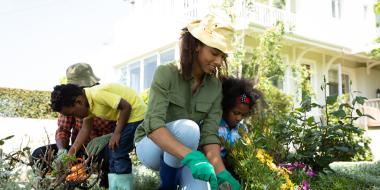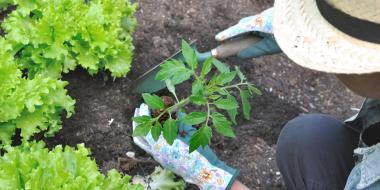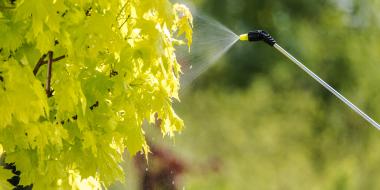It seems everybody wants to save the bees and plant pollinator gardens these days! This is great news for our insect friends—and for us. After all, 75 percent of the most common food crops around the world depend on pollination to produce, and loss of habitat and chemical use have led to steep declines in pollinator populations in recent years. The good news is that people are now rallying to help, with public pollinator projects and private landowners creating the latest trend in gardening: native plants.
Generally, it is thought that native plants impart greater ecological benefits to native wildlife than do non-native species. This occurs through a process of coevolution, where two or more species reciprocally affect each other's evolution through natural selection. What this means is that most native plants evolved in tandem with native insects and have learned how best to support them with rich nectar and pollen rewards, as well as being preferred hosts for their eggs and larva. An example of this symbiosis is the monarch butterfly who depends on a particular host for its survival. Monarch larvae can only eat milkweed plants, so their eggs must be laid on this species. Another issue is that plants produce secondary metabolites to deter pests, and native insects have coevolved to be able to detoxify these. Few native insects are likely to have the ability to deal with the metabolites produced by non-native plant species.
Native plants, defined Native plants are classified as those that existed in a given area prior to European colonization. The rapid introduction of non-native flora and fauna at that time drastically altered the ecology of North American landscapes.
Pollen particular?
This big buzz about native plants may leave you scratching your head at the nursery, as many garden centres don’t carry true natives—only cultivars of native plants. Coined as nativars, they are technically the same species as their native counterpart, but offer variations in size, colour, and other traits desired by homeowners. The big question is, though: can the bees tell the difference? Do they care? In conservation circles, nativars have a bad rap in terms of value for pollinators, but what do the data show? As is often the case—it depends! In some cases, pollinators show clear preference for the true native species over the cultivar, sometimes they prefer the cultivar, and a lot of the time it does not seem to matter.
Cultivar, defined Cultivars of plants have been bred for specific desirable characteristics. These could be colour, length or timing of bloom, height, shape, number of flowers or petals, disease resistance, or sterile seeds, among other traits.
Most plants are generalist nectaries and can be pollinated by many different species. Some plants cater to specialist pollinators like hummingbirds or bumble bees and have flower types that can only be accessed by specific species. Studies show that sometimes there are preferences for native plants or cultivars based on the type of pollinators. In a 2019 study through the University of Connecticut, six native shrubs and their cultivars were examined in terms of insect preference. Native chokeberry had more solitary ground-nesting bees visiting it than its cultivars, but other pollinator groups didn’t show a preference for one over the other. Conversely, Monlo, a cultivar of ninebark, attracted more hoverflies than did the native species, which was hypothesized to be due to monlo’s higher contrast between its flowers and the reddish-purple foliage than the green foliage of the straight ninebark species.
In another study, bumblebees preferred native purple coneflowers over cultivars with white flowers like the ‘white swan’ coneflower cultivar, but other insect species did not seem to have a preference. Similarly, the California false chinch bug showed clear preference for the wild type coreopsis flower but had no preference for the bergamot straight type versus the cultivars tested in a 2018 study at the University of Georgia.
Bee-utiful solutions
What is clear is that adding colour and diversity to your yard, whether with pure native plants or nativars, is better than having a monoculture of turf grass. It is also helpful to include a variety of unrelated species to attract different types of pollinators. So rather than a whole rose garden, or five different cultivars of hydrangea, plant five or six different species of plants with different flower types and bloom times. These choices will ensure you are supporting a variety of pollinators, and if you want to be cautious with any nativar selections, then avoid those that modify the flower shape, have double petals, or are sterile.
To find out which plants are native to your region, there are a couple of good online databases.
In the United States visit the Lady Bird Johnson Wildflower Center (wildflower.org), and in Canada visit the CanPlant Database (can-plant.ca), to learn whether a plant is native to your state or province. Local conservation groups and enthusiasts will be able to help you with more specific regional information, if you’d like to learn more about what might’ve grown in your backyard 6,000 years ago!
You May Also Like: How to Build a Bee Home in Your Own Back Yard, Bee Kind to Backyard Pollinators, Gardening for Absolute Beginners.






